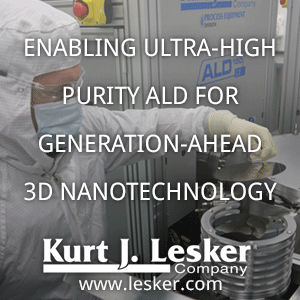Epitaxial nanometer-thin indium nitride (InN) films are considered promising active layers in various device applications but remain challenging to deposit. Pedersen's group at Linköping University, Sweden, has compared the morphological evolution and characterizations of InN films with various growth conditions in CVD by both a plasma ALD approach and a conventional metalorganic CVD approach.
Their results show that a time-resolved precursor supply is highly beneficial for deposition of smooth and continuous InN nanometer-thin films. The time for purging the reactor between the precursor pulses and low deposition temperature are key factors to achieve homogeneous InN. The gas exchange dynamics of the reactor is further studied using computational fluid dynamics.
Top-view SEM images of InN grown on SiC by using both ALD and continuous CVD at different deposition temperatures: (a) 320, (b) 400, and (c) 450 °C. In each figure, the result from ALD is shown in the upper right part while the result from continuous CVD is shown in the bottom left part. (Journal of Applied Physics 130, 135302 (2021); https://doi.org/10.1063/5.0061926)
X-ray diffractograms of (a) symmetric 2θ-ω scan of InN films deposited on 4H-SiC (0001) by ALD and continuous CVD. The process temperatures of ALD are indicated, respectively, in the plot. The curves are plotted in the log scale and are shifted vertically for visual clarity. (b) ω scan of InN (0002) and SiC (0004) of samples deposited at different temperatures.
According to their study, 320 °C is found to be the upper temperature where the dynamics of the deposition chemistry can be controlled to involve only surface reactions with surface species. The results highlight the promising role of the ALD technique in realizing electronic devices based on nanometer-thin InN layers.
This study and previous findings in the literature demonstrate the importance of using a time-resolved precursor supply in CVD of InN in which the purge time plays an important role. It should also be noted that the best results in this study are outside the window where the deposition per ALD cycle is constant in temperature. Such observation suggests that a true, self-limiting ALD behavior is not the most critical factor but rather the dynamic precursor supply. Meanwhile, the experimentally optimal purge time and precursor pulse time should vary from reactor to reactor based on their geometry and volume.
Reference: On the dynamics in chemical vapor deposition of InN, Journal of Applied Physics 130, 135302 (2021); https://doi.org/10.1063/5.0061926



%20(1).png)























